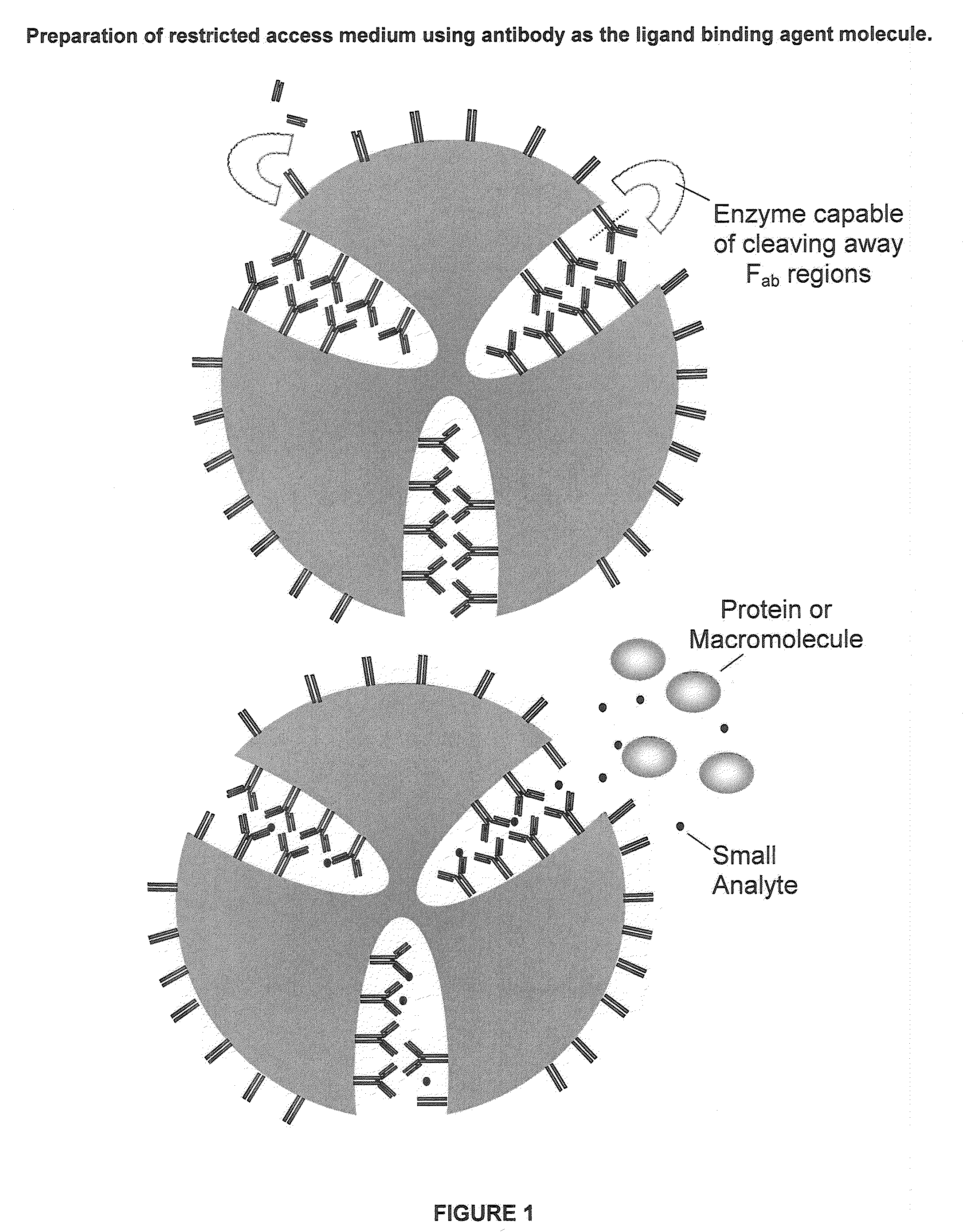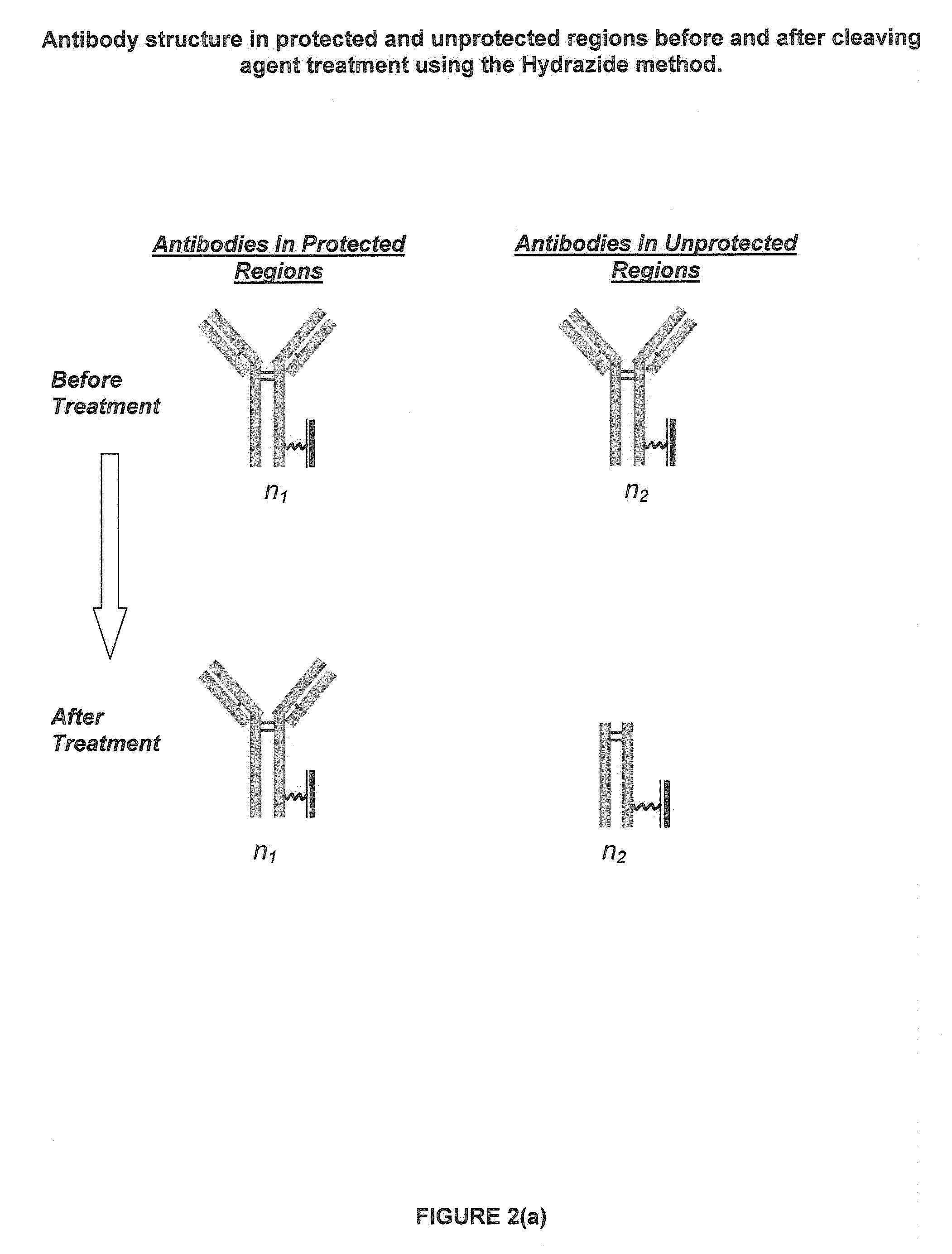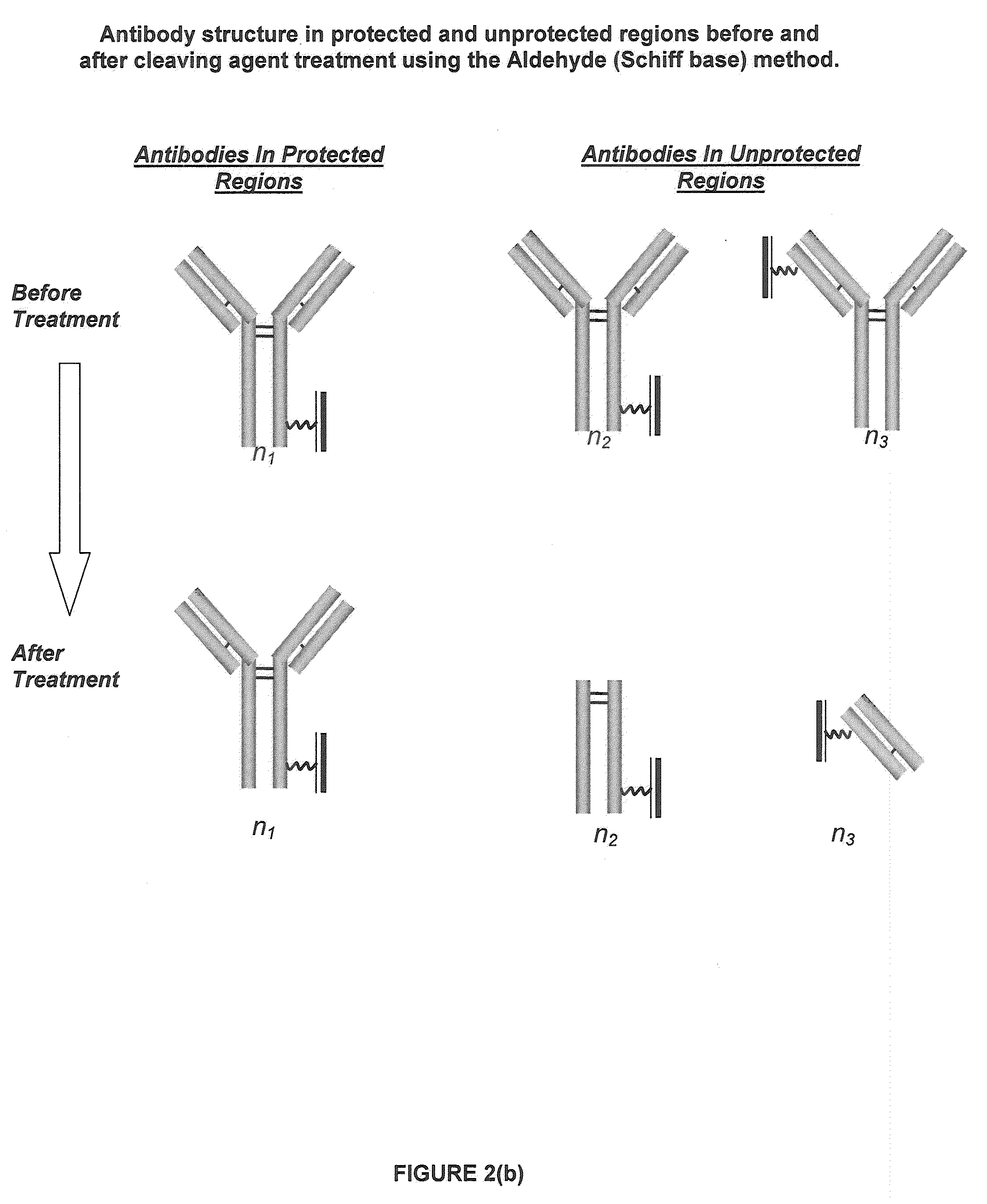Restricted Access Media and Methods for Making Restricted Access Media
a technology of restricted access and restricted media, applied in the field of restricted access media and methods for making restricted access media, can solve the problems of reduced or complete loss of activity of antibodies attached to a support by their f/sub>ab/sub>fragment, only working for some analytes, and only partial separation of antibodies, so as to slow or incomplete digestion of antibodies, and reduce the amount of antibodies l
- Summary
- Abstract
- Description
- Claims
- Application Information
AI Technical Summary
Benefits of technology
Problems solved by technology
Method used
Image
Examples
example 1
Description of Chemicals and Apparatus
[0073]Nucleosil Si-50, Si-100, Si-300 and Si-500 silica supports (7 μm particle diameter; nominal pore size, 50, 100, 300 or 500 Å, respectively) were from Macherey Nagel (Duren, Germany). Rabbit immunoglobulin G (IgG, reagent grade), monoclonal anti-fluorescein antibodies (anti-FITC clone FL-D6, produced in mouse ascites fluid), the fluorescein conjugate of bovine serum albumin (fluorescein-BSA; prepared using fluorescein isothiocyanate and giving 12 mol fluorescein / mol protein), papain (85% protein, from papaya latex), fluorescein (≧90% pure), periodic acid reagent (>99% pure), sodium cyanoborohydride (>99% pure), sodium borohydride (98% pure), D / L-dithiothreitol (DTT, >99% pure), iodoacetamide (˜99% pure), and ethylenediaminetetraacetic acid disodium salt dehydrate (EDTA, ˜99% pure) were from Sigma (St. Louis, Mo.). The 3-glycidoxypropyltrimethoxysilane (>94% pure), and oxalic dihydrazide (98% pure) were from Aldrich (Milwaukee, Wis.). Ethyle...
example 2
Preparation of Aldehyde-Activated Support
[0076]A silica support was converted into a diol form by treating a 500 mg quantity of the support with 3-glycidoxypropyltrimethoxysilane to introduce epoxy groups onto the silica. The resulting epoxy silica support was treated with 0.1 M sodium acetate buffer at pH 5.5 by sonication under vacuum for 10-15 minutes. 3-Glycidoxypropyltrimethoxysilane (5%-10% v / v) was added into the suspension and shaken for 5 hours at 90° C. The epoxy silica support was washed several times with water and an aqueous solution of sulfuric acid (pH 3.0). The epoxy silica support was then suspended in 100-150 mL of an aqueous sulfuric acid solution (pH 3.0) and refluxed for one hour to convert the epoxy silica support into a diol form. The resulting diol silica support was washed with several portions of water, methanol and ether. The diol silica support was dried overnight under vacuum and stored in a desiccator until use. The diol content of the diol silica suppo...
example 3
Preparation of Hydrazide-Activated Support
[0078]To prepare a hydrazide-activated silica support, 200 mg of the aldehyde-activated silica support was suspended in 30 mL of 0.10 M potassium phosphate buffer (pH 5.0) that contained a 5-fold mole excess of oxalic dihydrazide versus the initial diol groups present in the added aldehyde-activated silica support. The slurry was shaken for 2 hours at room temperature on a wrist-action shaker. The support was then washed several times with 0.10 M potassium phosphate buffer (pH 7.0). After activation, a 25-fold mol excess of sodium borohydride (versus the initial diol groups) in 4 mL of 0.10 M potassium phosphate buffer (pH 8.0) was added in several small portions to the support slurry to reduce any remaining aldehyde groups. This mixture was shaken for 90 minutes at room temperature and washed several times with 0.10 M potassium phosphate buffer (pH 7.0). The final hydrazide-activated support was stored in 0.10 M potassium phosphate buffer (...
PUM
 Login to View More
Login to View More Abstract
Description
Claims
Application Information
 Login to View More
Login to View More - R&D
- Intellectual Property
- Life Sciences
- Materials
- Tech Scout
- Unparalleled Data Quality
- Higher Quality Content
- 60% Fewer Hallucinations
Browse by: Latest US Patents, China's latest patents, Technical Efficacy Thesaurus, Application Domain, Technology Topic, Popular Technical Reports.
© 2025 PatSnap. All rights reserved.Legal|Privacy policy|Modern Slavery Act Transparency Statement|Sitemap|About US| Contact US: help@patsnap.com



